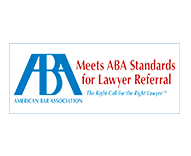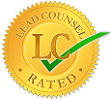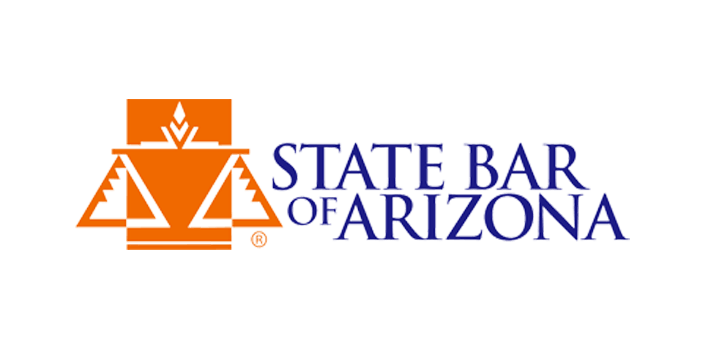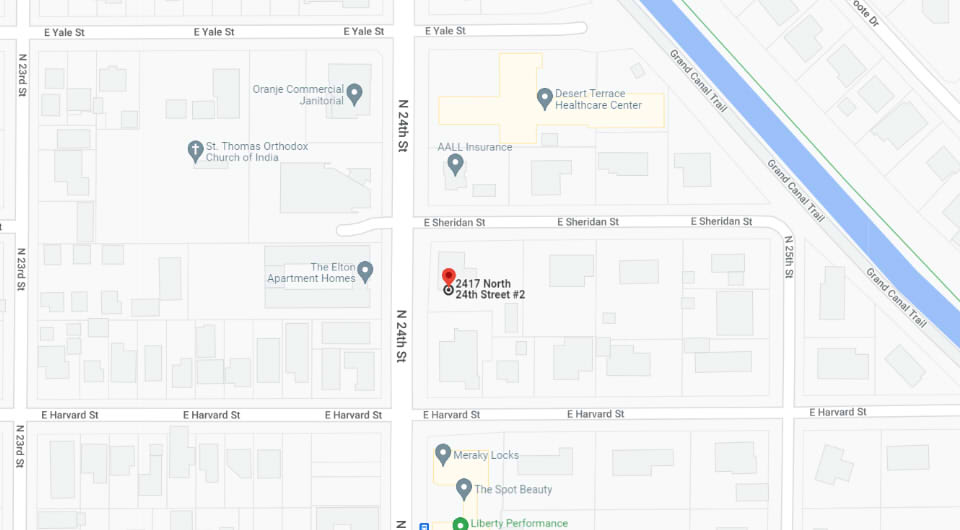Childbirth is an extraordinary and joyous event, filled with hope and anticipation for the future. However, when medical negligence occurs during the delivery process, the consequences can be life-altering, leaving families grappling with the physical, emotional, and financial challenges that follow.
Erb’s Palsy (also referred to as Erb-Duchenne Palsy) is a birth injury that affects the nerves of a newborn’s upper arm, specifically the brachial plexus. This condition arises from complications during a difficult or traumatic birth, causing damage to the nerves responsible for controlling movement and sensation in the affected arm.
The result is partial or complete paralysis of the arm, creating lifelong challenges for the child and their family. While Erb’s Palsy can vary in severity, it often requires extensive medical interventions, physical therapy, and in some cases, surgery to restore or improve arm function.
The emotional toll on both the child and their loved ones can be immense, as they navigate the complexities of managing the condition and seeking the best possible care and support. At Phoenix Personal Injury Attorney Law Firm, we understand the immense impact that Erb’s Palsy can have on a family’s quality of life.
We are committed to advocating for those affected by negligent medical care in Phoenix. We strive to hold responsible parties accountable and secure the compensation necessary to provide the best possible care and support for our clients and their families.
What is Erb’s Palsy?
Erb’s Palsy is a condition that occurs as a result of damage to the brachial plexus, a network of nerves located in the shoulder region. It is commonly associated with difficult or traumatic childbirth, where the baby’s shoulder becomes impacted during delivery, leading to excessive stretching or tearing of the brachial plexus nerves.
The brachial plexus is responsible for controlling movement and sensation in the shoulder, arm, and hand. When these nerves are injured, it can result in partial or complete paralysis of the affected arm.
The severity of Erb’s Palsy can vary, ranging from mild weakness to a total loss of function in the affected limb. Typically, Erb’s Palsy affects the upper arm and shoulder area, leading to difficulties in performing everyday tasks such as reaching, grasping, or lifting. In some cases, the condition may also cause muscle atrophy, limited range of motion, and sensory impairments in the affected arm.
Medical interventions are often required to manage Erb’s Palsy. Treatment options may include physical therapy, occupational therapy, specialized exercises, and, in severe cases, surgical procedures to repair or reconstruct the damaged nerves.
While Erb’s Palsy is often the result of unforeseeable complications during childbirth, it can also occur due to medical negligence or improper obstetric practices. Instances where excessive force or improper maneuvers are used during delivery, particularly in cases of shoulder dystocia (when the baby’s shoulder gets stuck behind the mother’s pubic bone), can significantly increase the risk of brachial plexus injuries.
Families affected by Erb’s Palsy face significant challenges, both emotionally and financially, as they navigate the long-term care and support required for their child’s well-being. Seeking legal representation from a medical malpractice attorney who specializes in birth injuries can help families understand their rights, evaluate the circumstances surrounding the injury, and pursue legal action if medical negligence was a contributing factor.
How Does Medical Malpractice Contribute to Erb’s Palsy?
Medical malpractice can contribute to Erb’s Palsy in several ways. During the delivery process, medical professionals have a duty to provide a reasonable standard of care to both the mother and the newborn.
When healthcare providers fail to meet this standard, it can result in preventable injuries, including Erb’s Palsy. Here are some examples of how medical malpractice can contribute to the development of Erb’s Palsy:
- Improper use of delivery techniques — During a difficult delivery, medical professionals may need to employ specific techniques to safely deliver the baby. If excessive force is used or improper maneuvers are performed, such as excessive pulling or twisting of the baby’s head or neck during delivery, it can cause stretching or tearing of the brachial plexus nerves, leading to Erb’s Palsy.
- Failure to identify risk factors — Certain risk factors make a baby more prone to shoulder dystocia, which is a significant contributing factor to Erb’s Palsy. These risk factors may include a large baby, gestational diabetes, maternal obesity, or prolonged labor. Healthcare providers have a responsibility to identify these risk factors and take appropriate measures to mitigate them. Failure to recognize and address these risk factors can result in preventable birth injuries.
- Inadequate monitoring and intervention — During labor and delivery, healthcare providers must carefully monitor the mother and the baby for any signs of distress or complications. Failure to recognize signs of fetal distress, such as an abnormal fetal heart rate, and take appropriate actions to address the situation can increase the risk of traumatic birth, including the occurrence of Erb’s Palsy.
- Delayed or improper response to shoulder dystocia — Shoulder dystocia occurs when the baby’s shoulder becomes stuck behind the mother’s pubic bone during delivery. It is a critical situation that requires prompt and proper management. If medical professionals fail to recognize and respond promptly to shoulder dystocia, it can lead to excessive stretching or tearing of the brachial plexus nerves, resulting in Erb’s Palsy.
- Insufficient training or negligence — In some cases, medical professionals may lack the necessary training, skills, or experience to handle complicated deliveries effectively. Negligence, in the form of inattentiveness, distractions, or carelessness during the delivery process, can also contribute to birth injuries such as Erb’s Palsy.
Note that not all cases of Erb’s Palsy are caused by medical malpractice. Some instances may be due to unforeseeable complications during childbirth. However, if medical negligence or substandard care played a role in the development of Erb’s Palsy, affected families may have grounds for a medical malpractice claim to seek compensation for the harm caused and the expenses associated with their child’s condition.
Pursuing Compensation for Erb’s Palsy Caused by Medical Malpractice
You are entitled to seek compensation if your baby sustained a birth injury, including Erb’s Palsy, as a result of medical malpractice. However, pursuing compensation is a complex and sensitive legal matter.
Below, we list the steps you should take to pursue compensation for Erb’s Palsy caused by medical malpractice:
- Consult with a medical malpractice attorney.
- Investigate and gather evidence.
- Establish medical negligence.
- Calculate damages.
Here is a comprehensive discussion of each of these steps:
Consult with a Medical Malpractice Attorney
The first step is to consult with a medical malpractice attorney. Here are some ways in which a medical malpractice attorney can assist you:
- Evaluate the merits of your case — A medical malpractice attorney can evaluate the details of your case and determine whether you have a viable claim for compensation. They can review your medical records, consult with medical experts, and assess the extent of the harm caused by medical negligence.
- Navigate the legal process — Medical malpractice cases can be complex and challenging to navigate. An experienced attorney can guide you through the legal process, explain your legal rights and options, and help you make informed decisions about your case.
- Conduct a thorough investigation — A medical malpractice attorney can conduct a thorough investigation to gather evidence supporting your claim of medical negligence. This may include reviewing medical records, interviewing witnesses, and consulting with medical experts to establish the standard of care and identify any deviations from it.
- Advocate on your behalf — A medical malpractice attorney can represent you and advocate on your behalf throughout the legal process. This includes negotiating with insurance companies and responsible parties to reach a fair settlement or representing you in court if a lawsuit is necessary.
- Calculate damages — A medical malpractice attorney can help you accurately calculate and document the full extent of your damages, including medical expenses, future treatment costs, lost income, pain and suffering, and other relevant economic and non-economic losses.
- Protect your legal rights — A medical malpractice attorney can help protect your legal rights and ensure that you are treated fairly throughout the legal process. They can advise you on legal deadlines and requirements, respond to any legal challenges, and help you navigate any legal issues that may arise.
In summary, a medical malpractice attorney can provide you with valuable legal assistance and help you seek the compensation you deserve if you have been a victim of medical negligence. They can evaluate the merits of your case, navigate the legal process, conduct a thorough investigation, advocate on your behalf, calculate damages, and protect your legal rights.
Investigate and Gather Evidence
Investigating and gathering evidence for an Erb’s Palsy medical malpractice lawsuit is a crucial step in building a strong case. Here are some key aspects of the investigation process that a medical malpractice attorney may undertake:
- Reviewing medical records — Your attorney will thoroughly examine all relevant medical records, including prenatal records, labor and delivery records, postnatal records, and any other documentation related to your child’s care. This review helps identify potential signs of medical negligence, such as deviations from the standard of care or documentation of complications.
- Consulting with medical experts — Medical malpractice cases require expert opinions to establish the standard of care and whether it was breached. Your attorney will consult with qualified medical experts who specialize in the field of obstetrics or pediatric neurology to review the records, provide expert analysis, and determine if there were any errors or negligent actions that led to the development of Erb’s Palsy.
- Obtaining witness statements — If there were witnesses present during the delivery, such as medical staff or family members, their statements can provide valuable insights into the events that occurred. Your attorney may interview witnesses and obtain signed statements to support your case.
- Evaluating the healthcare provider’s actions — Your attorney will assess the actions and decisions made by the healthcare provider involved in the delivery. This evaluation will involve comparing their conduct to the accepted standard of care in similar circumstances. Any deviations from the standard of care that contributed to the development of Erb’s Palsy will be identified and documented as evidence.
- Gathering additional documentation — Other relevant documents, such as imaging reports, test results, correspondence between healthcare providers, and relevant hospital policies or guidelines, may be obtained to further support your case. These documents can provide additional evidence of negligence or help demonstrate the extent of the harm caused by the medical negligence.
- Collaborating with other experts — Depending on the specifics of your case, your attorney may collaborate with other experts, such as vocational rehabilitation specialists or economists, to assess the long-term impact of Erb’s Palsy on your child’s life and calculate the full extent of damages.
By conducting a thorough investigation and gathering compelling evidence, your medical malpractice attorney will strengthen your case and increase the likelihood of a favorable outcome. This will allow you to seek the compensation you deserve for the harm caused by medical malpractice.
Establish Medical Negligence
Establishing medical negligence requires demonstrating that the healthcare provider involved acted below the accepted standard of care. Here are the key elements involved in establishing medical negligence:
- Duty of care — It must be established that a healthcare provider-patient relationship existed, and the healthcare provider had a duty to provide a reasonable standard of care to the patient. This duty of care is a fundamental obligation that healthcare providers owe to their patients.
- Standard of care — The standard of care refers to the level of skill, knowledge, and care that a reasonably competent healthcare provider would exercise in similar circumstances. This standard is established by considering what other healthcare providers in the same field would have done in a similar situation.
- Breach of the standard of care — To prove medical negligence, it must be shown that the healthcare provider breached the applicable standard of care. This means that their actions or omissions deviated from what a reasonably competent healthcare provider would have done in similar circumstances. Expert testimony from qualified medical professionals is often crucial in establishing the breach of the standard of care.
- Causation — Causation involves demonstrating that the breach of the standard of care was a direct cause or a significant contributing factor to the development of Erb’s Palsy. This requires linking the healthcare provider’s negligence to the specific injury suffered by the child, showing that the injury would not have occurred in the absence of their negligent actions.
Building a strong case for medical negligence requires a thorough understanding of medical standards, expert testimony, and compelling evidence. Working with an experienced medical malpractice attorney who specializes in birth injury cases can significantly enhance your chances of successfully establishing medical negligence and seeking the compensation you deserve.
Calculate Damages
Calculating damages in an Erb’s Palsy medical malpractice lawsuit can be complex and often requires the input of expert witnesses, such as medical professionals and economists, to accurately quantify the losses incurred. Here are some factors to consider when calculating damages:
- Medical expenses — This includes past and future medical costs associated with the treatment and management of Erb’s Palsy, including hospitalization, medication, surgery, therapy, or other related expenses.
- Loss of earning capacity — If the child’s injury prevents them from pursuing certain careers or activities that they would have been able to if they did not have Erb’s Palsy, the lost earning capacity can be included in the damages. This may include future earnings and benefits that the child could have received had they not been injured.
- Pain and suffering — This type of damage refers to the physical and emotional distress and suffering caused by Erb’s Palsy. Pain and suffering damages are often subjective and can be challenging to quantify, but they are still an essential component of the damages in an Erb’s Palsy medical malpractice lawsuit.
- Loss of enjoyment of life — This type of damage refers to the impact that Erb’s Palsy has on the child’s ability to engage in normal activities, hobbies, and social interactions. The loss of enjoyment of life damage is intended to compensate the child for the loss of these experiences.
- Parental damages — If the parents have suffered financial and emotional losses as a result of their child’s Erb’s Palsy, these damages may also be included in the lawsuit. Examples of parental damages include lost wages due to having to care for the child, the costs of modifications to the home, and expenses related to transportation, among others.
- Punitive damages — In some cases, punitive damages may be awarded in addition to compensatory damages. Punitive damages are intended to punish the healthcare provider for their reckless or intentional conduct and to deter others from similar conduct in the future.
Find a Phoenix Medical Malpractice Attorney Near Me
Erb's Palsy is a devastating condition that can have lifelong implications for the affected individuals and their families. The condition often stems from medical negligence during childbirth, where healthcare professionals fail to take appropriate precautions or mishandle the delivery process.
Seeking justice and pursuing a medical malpractice claim can be a crucial step toward obtaining the support and compensation you deserve. At Phoenix Personal Injury Attorney, we understand the immense challenges faced by families dealing with Erb's Palsy and other birth injuries.
If your child has been diagnosed with Erb's Palsy due to medical negligence, we encourage you to reach out to our law firm today. We offer free consultations to discuss your case, assess its merits, and provide a clear understanding of your legal options. Call us today at 602-641-9589.










